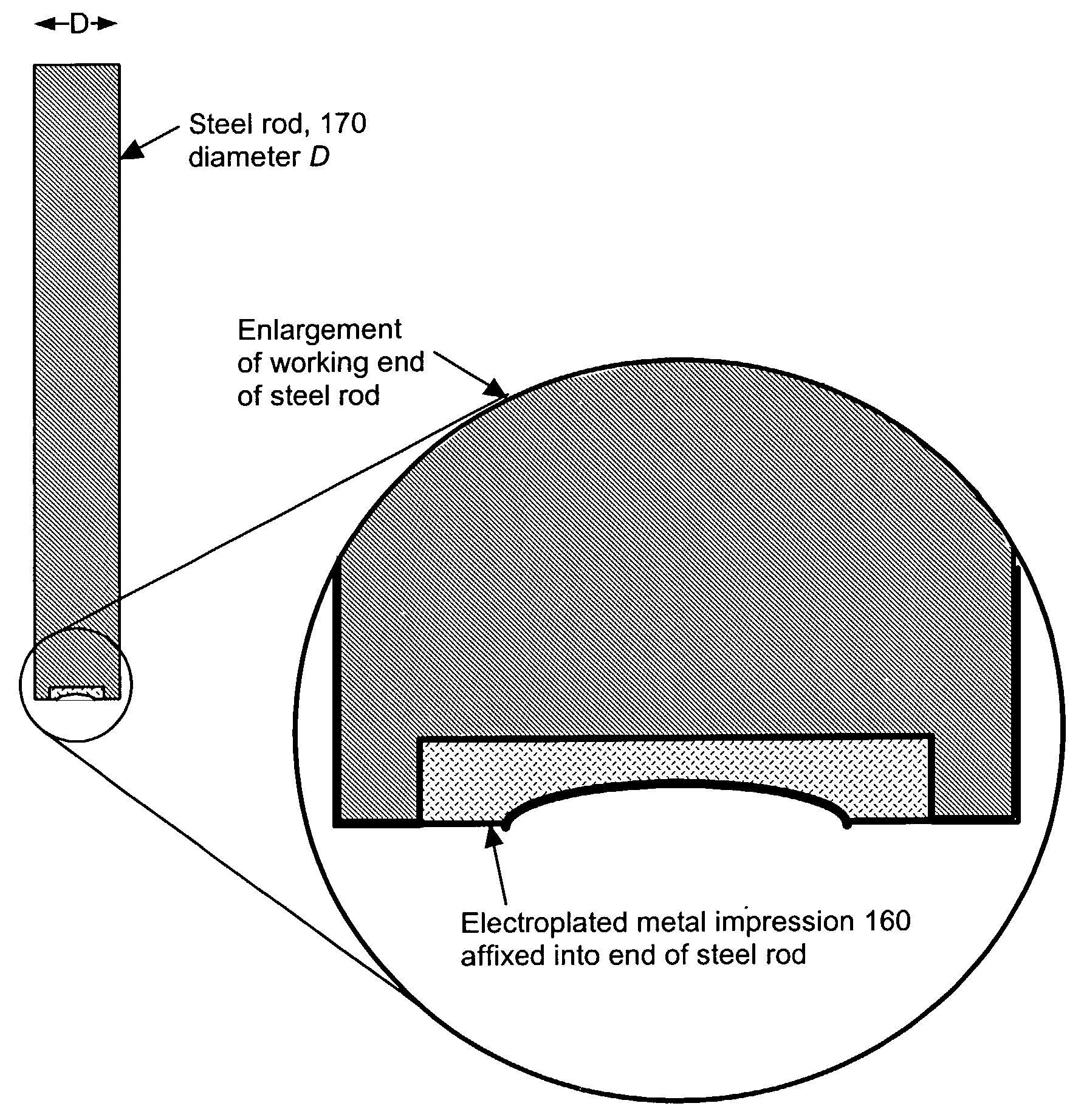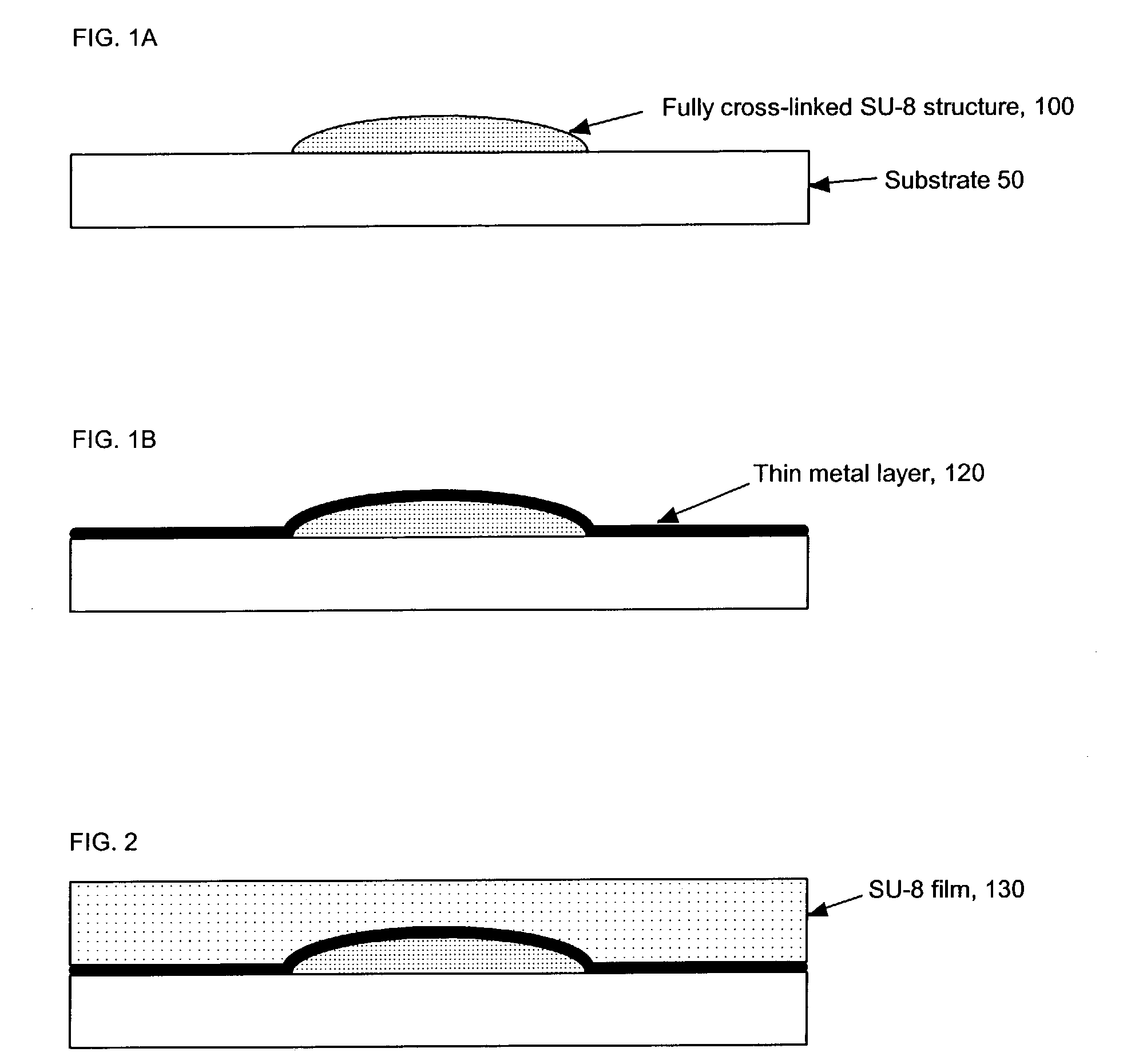Fabrication of molds and mold components using a photolithographic technique and structures made therefrom
a technology of photolithography and mold parts, which is applied in the field of mold and mold component fabrication using a photolithographic technique and the structure made therefrom, can solve the problems of increasing product development time, incurring further long delays, and affecting the quality of molds, so as to achieve the effect of faster and cheaper
- Summary
- Abstract
- Description
- Claims
- Application Information
AI Technical Summary
Benefits of technology
Problems solved by technology
Method used
Image
Examples
Embodiment Construction
[0017]A new process is described for fabricating mold inserts comprising an unrestricted smoothly varying surface and the polymeric structures comprising an unrestricted smoothly varying surface, such as an integrated optical structure, that may be made in molds comprising such inserts.
[0018]Suppose that a mold is required for fabrication of an injection molded integrated optical structure comprising an optical element whose surface elevation is described mathematically by a smoothly varying function z(r, θ). The quantity z represents the deviation of the surface elevation of said optical element normal to a local reference plane as one moves radially away a distance r from a selected reference origin in a direction defined to be θ degrees away from a selected reference direction, both r and θ defined in said reference plane. Said optical element may be further specified as requiring a clear aperture of radius Rc, which means that within said clear aperture radius, said lens element...
PUM
| Property | Measurement | Unit |
|---|---|---|
| thickness | aaaaa | aaaaa |
| wavelengths | aaaaa | aaaaa |
| wavelengths | aaaaa | aaaaa |
Abstract
Description
Claims
Application Information
 Login to View More
Login to View More - R&D
- Intellectual Property
- Life Sciences
- Materials
- Tech Scout
- Unparalleled Data Quality
- Higher Quality Content
- 60% Fewer Hallucinations
Browse by: Latest US Patents, China's latest patents, Technical Efficacy Thesaurus, Application Domain, Technology Topic, Popular Technical Reports.
© 2025 PatSnap. All rights reserved.Legal|Privacy policy|Modern Slavery Act Transparency Statement|Sitemap|About US| Contact US: help@patsnap.com



